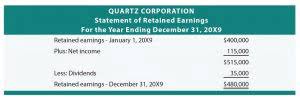On your Form 990, the IRS requires you to report your financial information according to different rules than you use for your audited financial statements. If you or your board come from the for-profit world, it’s okay to call it a Balance Sheet among your team. Under the accrual method of accounting, expenses are to be reported in the accounting period in which they best match the related revenues.
Out with the Old and In with the New Financial Reporting Standards for Nonprofits – Marks Paneth – Marks Paneth
Out with the Old and In with the New Financial Reporting Standards for Nonprofits – Marks Paneth.
Posted: Tue, 02 Oct 2018 07:00:00 GMT [source]
This map, also known as the statement of financial position, shows how much water comes in from rain (donations and grants) and goes out through hoses (expenses like administrative costs). It helps us see if there’s enough water left over (unrestricted net assets or equity) to keep the garden thriving. By adding and subtracting all the water used, nonprofit accounting gives everyone a clear picture of the garden’s financial activities.
Addressing Fundraising and Financing Activities in Nonprofit Financial Statements
Generally, you’ll want to have between three and six months of cash on hand to determine that your organization is in a financially stable and healthy position. While your assets are generally organized by liquidity, your liabilities are usually organized by due date. Short-term investments are usually labeled as current liabilities and should be owed within the year. Meanwhile, long-term liabilities represent the obligations that can be paid over multiple years. Current assets are cash or assets you can reasonably expect to convert to currency within a year. Examples include bank balances, accounts receivable, pledged donations, investments, and prepaid expenses.
The Statement of Activities, also known as the income statement, shows the revenues, expenses, and changes in net assets of a nonprofit organization over a specific period. It provides information on the organization’s financial performance and the sources and uses of funds. Nonprofit financial statements are documents that provide a summary of the financial activities and position of a nonprofit organization. They include information on the organization’s assets, liabilities, revenues, expenses, and net assets. Overall, significant accounting policies play a crucial role in nonprofit financial reporting.
Crucial Financial Data for Nonprofit Leaders
For example, salaries and benefits expense may be based on estimated time and effort spent in each category, while rent expense may be based on square footage used. There is no one required way to allocate costs, but typically time and effort estimates are the most readily available and can be used to estimate allocations for multiple expenses. There may also be expenses that are direct program, general and administrative, or fundraising expenses and those should be reported as such. It must also show the change in net assets for both net assets without donor restrictions and net assets with donor restrictions along with a total change in net assets.
Overall, the Statement of Cash Flows is a valuable tool for understanding the cash flow position of a nonprofit organization and assessing its financial health. The statement of cash flows details the organization’s cash inflows and outflows from operating activities, investing activities, and financing activities. Budget vs. Actual is an internal report, not part of your audited financial statements. statement of financial position non profit But because the board and leadership are involved in creating a nonprofit budget, it’s often more familiar and more useful on a day-to-day basis. The Statement of Cash Flows is one of the core external nonprofit financial statements required for an independent audit, so you should be familiar with it. A nonprofit’s expenses usually include all cash flowing out of the organization during the period.
Cash on Hand
These statements play a crucial role in promoting transparency, accountability, and informed decision-making in the nonprofit sector. Investing activities are an important part of a nonprofit organization’s financial operations. These activities involve the acquisition and disposal of long-term assets, such as property, equipment, and investments. Nonprofits may engage in investing activities to generate income or to support their mission. For example, a nonprofit may invest in stocks or bonds to earn dividends or interest that can be used to fund programs and services. It’s important for nonprofits to carefully manage their investing activities to ensure they align with their financial goals and risk tolerance.
- However, you can also use the next calculation (months of cash on hand) to calculate the liquidity of your nonprofit.
- If you’re like most nonprofit leaders, you didn’t get to the top of your organization by burying your nose in nonprofit financial statements.
- Because net assets with donor restrictions are not available until released, the Statement of Activities will never show expenses of donor restricted amounts.
- It is far more advisable for small and midsize nonprofits to build working capital cash and to fund an operating reserve before attempting to create an endowment.
- Reach out to a professional nonprofit accountant for help creating and interpreting your nonprofit’s balance sheet.
Net assets were formerly presented as unrestricted, temporarily restricted, or permanently restricted. Organizations should track the financial transactions related to all donor restricted gifts in the accounting records to determine the status of the organization’s use of the gift and for reporting purposes. We are here to help mission-centric leaders like you better understand the statement of financial position or balance sheet that your nonprofit organization should be keeping. It provides a snapshot of what your nonprofit owns and owes at a specific point in time, serving as a financial guide for informed decision-making and showcasing your dedication to financial stewardship. Donors and stakeholders want to know that their contributions are being used effectively to further the organization’s mission. To achieve this transparency, nonprofits rely on a variety of financial statements, one of the most crucial being the statement of Financial Position, also known as the balance sheet.
Unlike for-profit businesses, these statements focus more on how money is used to achieve the organization’s goals. For example, the Form 990 is a type of report that nonprofits submit to the IRS every fiscal year. It gives a clear picture of the organization’s financial activities over a specific time. The Statement of Financial Position includes assets, liabilities, and net assets. There is no requirement for nonprofits to show current assets or current liabilities so typically those are not identified. Net assets include amounts without donor restrictions and with donor restrictions.
Comments are closed.

